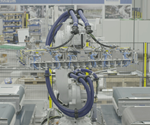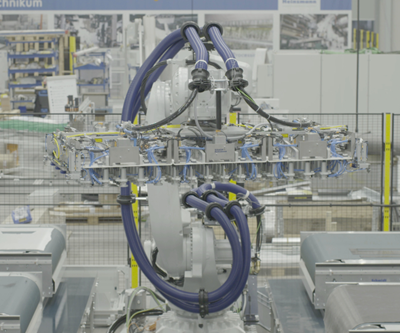Boeing to resume commercial airplanes production in Puget Sound
After temporary suspension due to COVID-19, Boeing plans to resume Washington state production facilities in a phased approach starting April 20.

Boeing 787 facility in Everett, Washington, U.S. Source | Boeing
On April 16, Boeing (Chicago, Ill., U.S.) announced that starting the week of April 19, it will resume all commercial airplanes production in a phased approach at its facilities in the Puget Sound region of Washington state. The aircraft manufacturer suspended operations at these facilities last month in response to the COVID-19 pandemic.
The company reports that it has taken extra precautions and instituted comprehensive procedures to keep employees safe and fight the spread of COVID-19 at all of it sites.
According to Boeing, approximately 27,000 people in the Puget Sound area will return to production of the 747, 767, 777 and 787 programs, supporting critical global transportation infrastructure, cargo services and national defense and security missions. The 737 program will resume working toward restarting production of the 737 MAX. Boeing South Carolina remains in a suspension of operations as of this announcement. Boeing reports that it has already restarted mostly defense production operations in the region with approximately 2,500 people.
“This phased approach ensures we have a reliable supply base ... and we have all of the necessary safety measures in place to resume essential work for our customers.”
Employees in the Puget Sound region working on the 737, 747, 767 and 777 programs will return as early as third shift on April 20, with most returning to work by April 21. Employees for the 787 program will return as early as third shift April 23, with most returning to work by April 24, Boeing says.
“The health and safety of our employees, their families and communities is our shared priority,” says Stan Deal, president and CEO of Boeing Commercial Airplanes and senior executive in the Pacific Northwest. “This phased approach ensures we have a reliable supply base, our personal protective equipment is readily available and we have all of the necessary safety measures in place to resume essential work for our customers.”
The company’s practices reinforce enhanced cleaning, employee health and physical distancing in partnership with employees. Aligned with federal and state guidance, these practices include:
- Staggered shift start times to reduce the flow of employees arriving and departing work
- Visual controls such as floor markings and signage to create physical distance
- Face coverings will be a requirement for employees at Boeing sites in Washington. Employees are strongly encouraged to bring in their own procedural mask or face covering; those who do not have a mask available will be provided with one.
- Providing required personal protective equipment to employees working in areas where physical distancing cannot be maintained for an extended period
- Asking employees to perform self-health checks before coming to work and to stay home if they are ill
- Employee wellness checks at the beginning of every shift and voluntary temperature screening at many manufacturing locations
- Contact tracing when an employee tests positive for COVID-19 to reduce risk to teammates
- Continued virtual meetings and employees who can work from home will continue to do
- Transportation and common areas adjusted for physical distancing
- Hand-washing stations in high-traffic areas and additional cleaning supplies available
Enhanced measures will continue until conditions allow for a return to regular work and cleaning processes, Boeing says.
Related Content
PEEK vs. PEKK vs. PAEK and continuous compression molding
Suppliers of thermoplastics and carbon fiber chime in regarding PEEK vs. PEKK, and now PAEK, as well as in-situ consolidation — the supply chain for thermoplastic tape composites continues to evolve.
Read MoreThe state of recycled carbon fiber
As the need for carbon fiber rises, can recycling fill the gap?
Read MoreMaterials & Processes: Fibers for composites
The structural properties of composite materials are derived primarily from the fiber reinforcement. Fiber types, their manufacture, their uses and the end-market applications in which they find most use are described.
Read MoreNovel dry tape for liquid molded composites
MTorres seeks to enable next-gen aircraft and open new markets for composites with low-cost, high-permeability tapes and versatile, high-speed production lines.
Read MoreRead Next
Composites suppliers, fabricators respond to coronavirus
Companies across the composites industry supply chain share how the COVID-19 pandemic is affecting their businesses, and how they are available to help.
Read MoreComposites end markets: Energy (2024)
Composites are used widely in oil/gas, wind and other renewable energy applications. Despite market challenges, growth potential and innovation for composites continue.
Read MoreFrom the CW Archives: The tale of the thermoplastic cryotank
In 2006, guest columnist Bob Hartunian related the story of his efforts two decades prior, while at McDonnell Douglas, to develop a thermoplastic composite crytank for hydrogen storage. He learned a lot of lessons.
Read More
.jpg;width=70;height=70;mode=crop)

























